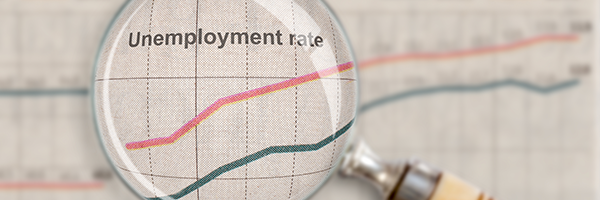
May 12, 2023 | Daily JAM, Mid Term, Morning Briefing |
It’s only a survey of consumer sentiment so it’s not very important to the financial markets, right? Wrong. The University of Michigan survey of consumer sentiment for May illustrates perfectly the trap that the Federal Reserve is caught in right now.

May 11, 2023 | Daily JAM, Morning Briefing |
The Producer Price Index rose 0.25% in April from March and at a 2.3% rate year-over-year, the Bureau of Labor Statistics reported today, May 11. This index measures prices at the wholesale level–changes at that level eventually show up in the prices that consumers pay so they’re an indicator of the direction of future consumer inflation. Economists surveyed by Bloomberg had expected producer prices to rise 0.3% in April on a monthly basis and 2.5% on a yearly basis. In March, producer prices slipped 0.5% on a monthly basis and rose 2.7% on a yearly basis. The annual 2.5% rate is the lowest annual increase in producer inflation in more than two years. So in these numbers, we’ve got clear evidence that inflation is falling. But, also this morning, initial claims for unemployment for the week ending May 6 rose 22,000 to a seasonally adjusted 264,000 claims. That was above expectations from economists surveyed by Reuters for 245,000 initial claims for unemployment. The number of workers filing new claims for unemployment hit a 1-1/2-year high.

May 5, 2023 | Daily JAM, Morning Briefing |
The U.S. economy added 253,000 jobs in April, the Bureau of Labor Statistics announced today, Friday, May 5. The official unemployment rate dipped by 10 basis points to 3.4%. (The U-6 unemployment rate, which includes discouraged workers who have stopped looking for a job and workers with part-time jobs who would like full-time work, fell to 6.1% in April (before seasonal adjustments) from 6.8% in March.) Economists were looking for the economy to add just 180,000 jobs in the month. The number is a huge surge after a drop from 472,000 jobs added in January to a revised 165,000 in March.

May 4, 2023 | Daily JAM, Morning Briefing, Short Term |
Initial claims for unemployment rose by the most in six weeks while continuing claims fell in the week ended April 29, the Labor Department reported this morning. Initial unemployment claims rose by 13,000 to 242,000. Economists surveyed by Bloomberg were looking for 240,000 initial claims. Continuing claims, which include people who have received unemployment benefits for a week or more and are a good indicator of how hard it is for people to find work after losing their jobs, fell by 38,000 to 1.81 million in the week ended April 22. That marked the biggest drop since July. If you think that a rise in unemployment and a weakening of the labor market is a good thing, as the Federal Reserve does, because it sets the stage for a decline in inflation, then today’s data had its negative aspects too. A separate report out today showed U.S. worker productivity declined in the first quarter by more than forecast and labor costs accelerated. That’s a strong argument for higher inflation.

May 3, 2023 | Daily JAM, Morning Briefing |
Today, Federal Reserve’s Open Market Committee raised the Fed’s benchmark rate by 25 basis points to a target range of 5%- to 5.25%. The interest rate increase was expected by just about everyone. At 1:50, 10 minutes before the Fed’s announcement, the Fed Funds Futures market had priced in 88.2% odds of a 25 basis point increase. The Fed’s statement omits prior language from the March meeting that said “some additional policy firming” may be warranted. Instead, the Fed said it will take into account various factors “in determining the extent to which additional policy firming may be appropriate.” In other words, rate increases or a pause will depend on the data.

April 23, 2023 | Daily JAM, Morning Briefing, Short Term |
The Bureau of Economic Analysis is scheduled to report the Personal Consumption Expenditures index, the Federal Reserve’s preferred measure of inflation, on April 28. But because the Fed’s pre-meeting quiet period stretches from April 22 to May 4, there won’t be any comments from Fed officials to spin the data for the financial markets. That could be, well, awkward, since it will leave Wall Street more in the dark than usual about what the inflation results mean. The PCE index is expected by economists surveyed by Bloomberg to have fallen in March to a 4.1% annual rate from the 5% reported for February. If the inflation numbers come in on expectations, investors and traders will be left wondering if the drop is enough to lead the Fed to stop its interest rate increases after a 25 basis point boost at the May 3 meeting.

April 12, 2023 | Daily JAM, Long Term |
Minutes from the Federal Reserve’s March 21-22 meeting show the central bank’s staff projecting a mild recession later in 2023 with a recovery from 2024 to 2025. A key reason cited by the staff: stress in the banking sector.

April 12, 2023 | Daily JAM, Morning Briefing |
All items inflation as measured by the Consumer Price Index rose by just 0.1% in March, the Bureau of Labor Statistics reported today. That is a big drop from the 0.4% increase in February. The year-over-year all-items inflation rate fell to 5.0% in March. from 6.0% in February. Inflation is coming down and it’s coming down pretty fast, right? Well, no. The core inflation rate, which excludes energy and food prices on the theory that they are too volatile to count as “real” inflation, rose 0.4% in March after climbing 0.5% in February. The year-over-year core inflation rate rose slightly to 5.6%. So inflation is proving to be very sticky.

April 1, 2023 | Daily JAM |
Friday’s PCE (Personal Consumption Expenditures) index, the Federal Reserve’s preferred inflation, measure gave believers in Goldilocks just enough to keep the fairy tale alive. The all-items index rose 0.3% in February. That works out to a 5% annual rate. The month-to-month increase was less than expected by economists surveyed by Bloomberg–who were looking for 0.4%. The core index, which excludes food and energy prices, also rose by 0.3% month to month. Again less than expected. That put the annual core inflation rate at 4.6%.

March 28, 2023 | Daily JAM, Morning Briefing |
Now it’s not just the Cleveland Fed’s NowCast that’s pointing at problems in Friday’s PCE (Personal Consumption Expenditures) index inflation report. Economists surveyed by Bloomberg project that the core PCE index–that is excluding food and fuel prices–climbed 0.4% in March from February. Year over year, the core PCE index is projected to be up 4.7% with the all-items rate up 5.1%.

March 25, 2023 | Daily JAM, Short Term |
Look for another inflation report this week. This time–on March 31–it’s the Federal Reserve’s favorite inflation model, the Personal Consumption Expenditure (PCE) index. And, there’s potential trouble in this report–if projections from the Cleveland Federal Reserve Bank’s Inflation NowCast are accurate.

March 25, 2023 | Daily JAM, Mid Term, Morning Briefing |
Goldilocks is just about the only thing keeping the current stock market afloat in the face of a storm of worry from a banking crisis, to stubbornly high inflation, and signs of a cooling economy. The Goldilocks story says, Don’t worry about all that. The Federal Reserve is about to pivot on interest rates. At its May 3 meeting, the Federal Reserve Open Market Committee might raise interest rates by 25 basis points but that will be the last interest rate increase. And then the Fed will move to start cutting interest rates in the second half of the year with financial markets pricing in as much as 200 basis points of cuts by the end of 2024. And all this will happen, too, without a recession, as the Fed engineers a successful soft landing of the economy and a significant slowdown in inflation.
If you believe that, you should be buying stocks. I don’t believe it. And more importantly, the bond market doesn’t believe it.










